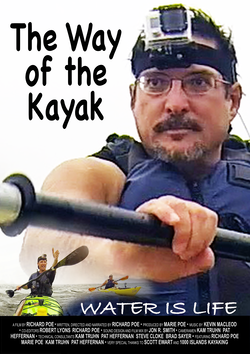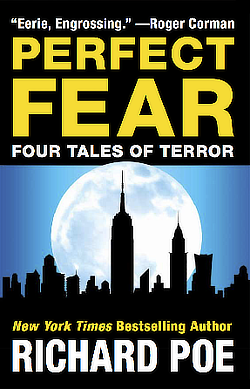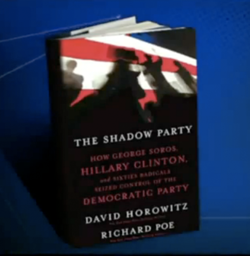Why Hillary Hates Guns
|
by Richard Poe Monday, December 3, 2007 12:00 am Eastern Time |
Archives 7 Comments |
HILLARY CLINTON is America’s leading gun-hater. This is no secret. Her “F” rating from the National Rifle Association merely confirms the obvious. More perplexing is why she hates guns. The explanation may lie in the teachings of Hillary’s one-time political mentor Saul Alinsky.
As noted in last week’s column, Alinsky was a radical organizer who got his start building militant community groups in Chicago slums during the 1930s. Young Hillary met him through a leftwing church group in high school. She wrote her senior thesis about Alinsky at Wellesley College, and remained friends with him until Alinsky died in 1972. After law school, Alinsky operatives got Hillary an appointment to the House Judiciary Committee’s Watergate investigative team in 1974.
Hillary’s ties to Alinsky run deep. Her tactics have long borne his imprint.
In 1971, Alinsky wrote Rules for Radicals, a book destined to change the American left. In it, Alinsky mocked Sixties radicals as dilettantes who loved to talk revolution, but shunned the hard work of organizing the masses.
Especially irksome to Alinsky was loose talk of guns and bombs.
Such talk was fashionable in the Sixties. Student protestors loved quoting Chairman Mao’s 1938 statement, “Political power grows out of the barrel of a gun”.
Some activists, like those of the Black Panther Party, went beyond mere words. In their ten-point platform of October 1966, the Panthers declared, among other things, “The Second Amendment to the Constitution of the United States gives a right to bear arms. We therefore believe that all black people should arm themselves for self-defense.”
On May 2, 1967, Panther boss Bobby Seale led some 20 armed Panthers into the California State Capitol Building in Sacramento, brandishing loaded rifles, shotguns and pistols. They were protesting the Mulford Act, a pending bill that would bar Californians from carrying guns in public or in vehicles.
Police arrested Seale and five others, but pressed no weapons charges. Carrying guns was still legal in California. Prosecutors ended up charging the Panthers only with disturbing the peace.
Young Hillary Rodham supported the Black Panthers. At Yale, she helped defend the New Haven Nine, a group of Panthers who tortured to death a suspected police informant. Hillary worked closely with Panther attorney Charles Garry on the case. She was put in charge of monitoring the Panther trial for civil rights violations.
Despite her work on behalf of the Panthers, Hillary may have developed doubts about their tactics. Her mentor Saul Alinsky had harsh words for Panther gunmen. In his book Rules for Radicals, Alinsky expressed “contempt” for “those who leave their dead comrades and take off for Algeria or other points”.
Alinsky was no pacifist. In Rules for Radicals, he wrote, “The power of a gun may be used to enforce slavery, or to achieve freedom”. He rejected violence for practical reasons, not moral ones.
The problem with America, Alinsky wrote, was that rightwingers had more firepower than leftists. This made violent revolution impractical. “`Power comes out of the barrel of a gun!’ is an absurd rallying cry when the other side has all the guns,” Alinsky admonished his readers.
In Rules for Radicals, Alinsky noted approvingly that Lenin renounced violence upon returning to Russia from exile in April 1917. The Tsar had abdicated, but Social Democrats now controlled the government. Lenin’s Bolsheviks were outnumbered and outgunned.
Alinsky explained, “The essence of Lenin’s speeches during this period was `They have the guns and therefore we are for peace and for reformation through the ballot. When we have the guns then it will be through the bullet’ And it was.”
Lenin did not have to wait long. He siezed power in an armed coup in October 1917.
As long as the right has more guns, the left should oppose guns, Alinsky concluded. Only when the balance of power shifts, and “appropriate weapons” became “available” to the left, should leftists consider turning to violence.
To what extent Senator Clinton adopted Alinsky’s thinking on revolutionary violence we can only guess. However, her policy on guns is clear, whatever her motives may be. She seeks to disarm the American people, while arming herself to the hilt.
Hillary exhorts us to give up our guns for the common good. For herself, she aspires to the Presidency, from which perch she would wield power as America’s top law enforcement official, highest-ranking intelligence officer and commander-in-chief of the mightiest army, navy and air force in the world.
Something about this deal does not strike me as equitable. Or wise.








See reader comments at FreeRepublic.com:
Posted on 12/03/2007 4:27:53 PM PST
Those few people who have read Clinton’s thesis would point out that she specifically rejected Alinsky’s ideology and methods.
To paraphrase from “Her Way” by Gerth and Van Natta.
“So far from being an exaltation of radical organizing, Hillary’s assessment of Alinsky was hostile, charging him with excessive radicalism. Her preferential option was to seek minor advances. within the terms of the system. She did not share these conclusions with Alinsky who had given her generous access during the preparation of her thesis and a job offer thereafter, which she declined.”
Not surprisingly, Clinton has been attacked by many on the left for rejecting Alinsky.
John Doar offered Clinton then Rodham a job on the Watergate committee.
I’m pretty sure Doar wasn’t an acolyte of Alinsky’s.
Considering how many reasons there are to dislike Hillary Clinton, I’m surprised at how often people make stuff up.
LilSatan writes: “I’m pretty sure Doar wasn’t an acolyte of Alinsky’s.”
Actually, I wasn’t referring to Doar. I was referring to Peter and Marian Wright Edelman, mentioned in my previous column. See below.
Excerpted from “Hillary, Obama and the Cult of Alinsky” (by Yours Truly):
I’m not seeing a connection that makes either Edelman an ideological disciple of Alinsky’s.
M.W. Edelman spoke at Alinsky’s funeral. She also speaks highly of him in an article on Alinsky’s relationship to Obama and Clinton.
I’ll take your word that she served on the board of one of Alinsky’s organizations, ’cause google isn’t showing it. Except where it references your article that is.
Even if we allow the Edelman/Alinsky cabal for the sake of argument; we’d have to establish an Edelman/Doar connection. Further we’d have to establish that the Edelmans had the necessary amount of influence at any level in 1974.
I’d like to suggest that Rodham got her position on the Watergate committee because of her history with the Democratic Party and through her own ability as a law student.
But perhaps we should back up to your central assertion. Was Saul Alinsky a malignant ideological spider that has cast his web across time and space?
“Radical Saul Alinsky: Prophet of Power to the People“, Time, March 2, 1970
“The Democratic Promise: Saul Alinsky and his Legacy“, ITVS, 1999
Spider? maybe.
Malignant? That would seem to be a minority opinion.
LilSatan writes: “I’ll take your word that she served on the board of one of Alinsky’s organizations, ’cause google isn’t showing it.”
Actually, you don’t need to take my word for it. You simply have to follow the link which I provided in the above-cited article. It will take you to a photocopy of a letter from Saul Alinsky to Hillary Rodham dated October 25, 1968, written on Industrial Areas Foundation stationery.
The foundation’s trustees are listed at the bottom of the stationery. There you will see the name “Miss Marian E. Wright” of Jackson, Mississippi. This is Marian Wright Edelman’s maiden name. Miss Wright served four years as director of the Jackson, Mississippi office of the NAACP Legal Defense and Educational Fund, leaving there in 1968 to work for Martin Luther King. She married Peter Edelman on July 14, 1968, whereupon she changed her name to Marian Wright Edelman.
Evidently, Mr. Alinsky wrote the aforementioned letter of October 25, 1968 on stationery printed before Miss Wright became Mrs. Edelman.
LilSatan, if I may offer some friendly advice; Google is an excellent resource, but its speed and convenience should not lull us into neglecting such time-honored methods as paying close attention to detail and applying our powers of reason. Reading books can also be helpful.